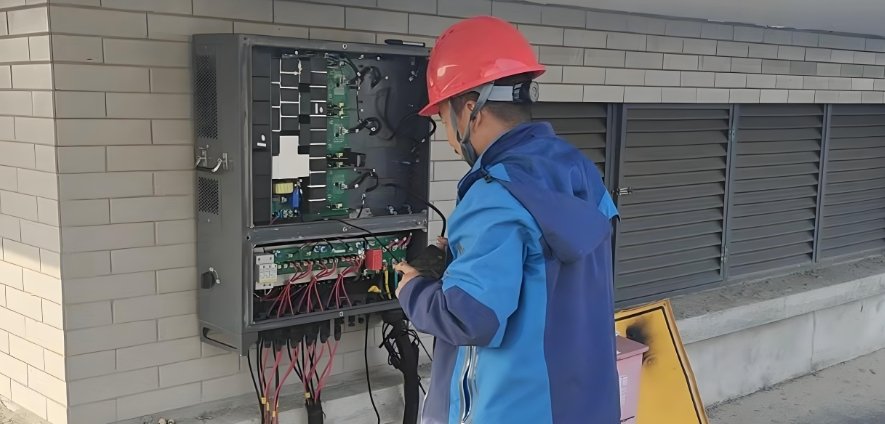Choosing the right inverter size is crucial for the longevity and efficiency of your electrical system. If the inverter is too small, it can’t handle the load; if it’s too large, you could be overpaying for unnecessary capacity.
In this guide, we'll walk through 8 essential steps for selecting an inverter size, and demonstrate how a family with a 4200W power requirement would need to choose a 6 kW inverter for optimal performance.
Step 1: Assess Your Power Requirements
This step involves calculating the power consumption of all devices you intend to run. Knowing this helps determine the minimum inverter size you need for reliable operation.
The first thing you need to do is figure out how much power you'll be using. Think about the devices and appliances you’ll need to power and their total consumption.
Example: Family Home Power Assessment
Let’s consider a typical family in a suburban area with moderate sunlight. They have the following appliances:
- Refrigerator: 200W
- Washing Machine: 800W
- Microwave: 1000W
- Television: 150W
- Laptop: 100W
- Ceiling Fans: 200W
- LED Lighting: 150W
Total Power Consumption:
200W + 800W + 1000W + 150W + 100W + 200W + 150W = 2700W
In this case, the family’s total power consumption is 2700W. This is the first step in understanding the inverter size they need.
Step 2: Add Up Total Power Consumption
Summing up the wattage of all devices provides the minimum inverter size. If you underestimate, you may face system failure when all devices are running at once.
Now that we have all the devices listed, it’s time to sum up their wattage. This will give you a rough idea of your minimum inverter size.

For the family example, the total wattage adds up to 2700W. This means they’ll need an inverter that can handle at least 2700W when all the devices are running at once.
Step 3: Account for Surge Power
Surge power1 is essential to consider when choosing an inverter. Appliances with startup power requirements2 may draw significantly more power during startup compared to their normal operation. Surge power can be several times higher than regular consumption, so plan accordingly for these spikes.
Example:
Some appliances, like refrigerators and microwaves, require extra power to start up. This surge power can be several times higher than the normal operating power. For example:
- Washing Machine: 800W × 1.5 = 1200W
- Microwave: 1000W × 1.5 = 1500W
When you account for surge power, the family’s total surge demand can reach up to 4200W. Therefore, the inverter should be able to handle this temporary spike in power.
Step 4: Account for Inverter Efficiency
Inverters operate at 80-90% efficiency. Adjusting for this ensures that your selected inverter meets the required power output after factoring in losses.
Inverters are not 100% efficient. Most inverters operate between 80% and 90% efficiency. For this family, let’s assume their inverter will operate at 85% efficiency.
So, to calculate the required inverter size:
- Required Inverter Size = Total Consumption / Efficiency
- Required Inverter Size = 2700W / 0.85 ≈ 3176W
Considering this, they’ll need an inverter that’s at least 3176W to cover the total power consumption, accounting for efficiency.
Step 5: Consider Future Growth
Account for future appliances, like an EV charger. A 20-25% buffer ensures your inverter will accommodate new loads over time.
The family is planning to add an electric vehicle (EV) charger in the next year. The charger requires 1500W.
If we add this to the total power consumption:
- 2700W + 1500W = 4200W
Now, they need to consider future growth. To ensure they’re prepared for additional appliances, a good rule of thumb is to add 20-25% to their total.
- Required Inverter Size = 4200W × 1.2 = 5040W
So, they should choose an inverter with at least 5 kW capacity to meet their current and future needs.
Step 6: Match Inverter Size to Solar Array (if applicable)
Ensure the inverter's capacity matches the solar array’s DC output for optimal performance. A slight oversizing allows for fluctuations.

Let’s say this family has a 5 kW solar system. To ensure optimal performance, their inverter size should match the DC rating of their solar array. If the solar system is 5 kW, then an inverter rated for 5 kW should work.
In this case, since the family is planning to add an EV charger, proper solar array sizing3 suggests oversizing the inverter slightly to handle fluctuations in solar output. A 6 kW inverter would be a good choice to accommodate future energy demands.
Step 7: Evaluate Geographic and Environmental Factors
Consider local sunlight and weather conditions. Less consistent solar output may require a slightly larger inverter for reliability.
The family lives in a suburban area with moderate sunlight. This means their solar array might not always operate at full capacity. In sunnier regions, they might be able to choose an inverter that closely matches the array’s capacity, but here, they need to account for less consistent solar output.
This is why a 6 kW inverter would be ideal. It gives the family some buffer in case their solar output drops below the array's maximum potential.
Step 8: Check for Safety Features
Look for essential safety features like overload protection and thermal shutdown. These safeguard your system from unexpected issues.
Before purchasing, ensure that the inverter has built-in protection features such as overload protection, short circuit protection, and thermal shutdown. These features safeguard both the inverter and the connected appliances.
The family should look for an inverter with these features to avoid damaging their devices during power surges or prolonged usage.
Conclusion
By assessing power needs, surge requirements, efficiency, and future growth, you can ensure the perfect inverter size for your system.
To sum up, the family’s ideal inverter size is 6 kW. Here’s how we arrived at this conclusion:
- They have a total power requirement of 2700W, which rises to 4200W when considering surge power.
- Accounting for efficiency, the minimum inverter size needed is 3176W.
- To accommodate future growth with an EV charger, they need to add 20-25%, bringing the required inverter size to 5 kW.
- Finally, factoring in geographic conditions and potential fluctuations in solar output, a 6 kW inverter is the most suitable choice.
This step-by-step approach ensures that the family has a reliable, scalable system that meets their current and future needs. By following these steps, you too can select the right inverter size for your home or business, avoiding overpaying or under-sizing your system.
Footnote:
-
This link explains surge power, its significance, and how to ensure your inverter can handle temporary power spikes. ↩
-
This link explains startup power requirements for appliances and how to calculate surge power for proper inverter sizing. ↩
-
This link explains the importance of solar array sizing and how it affects inverter selection and efficiency. ↩





